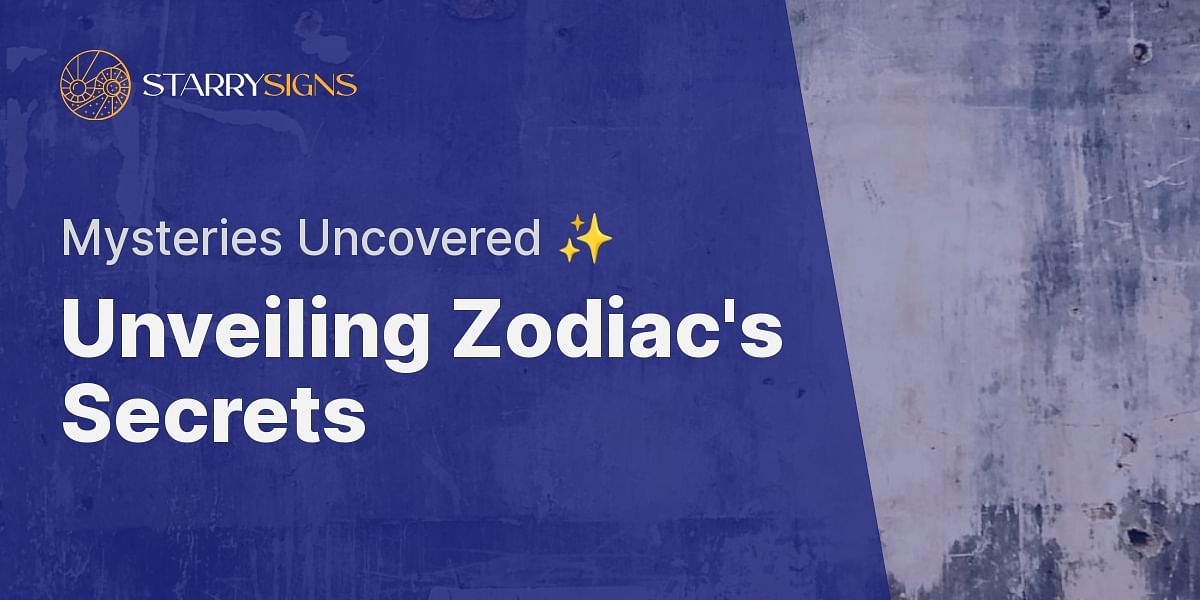Unveiling The Mysteries Of Zodiac Constellations: A Journey Through The Stars
Hey there, stargazers and cosmic wanderers! Ever found yourself gazing up at the night sky, wondering about those mysterious patterns up there? Well, today’s your lucky day because we’re diving deep into the enchanting world of zodiac constellations. These ancient celestial wonders have been captivating human imagination for thousands of years. From astrology to astronomy, the zodiac constellations hold secrets that connect us to the universe in ways you might not even realize yet.
Imagine this: you’re lying on a grassy hill under a velvet-black sky, surrounded by twinkling stars. Each one of those dots has a story, and together, they form constellations that have guided sailors, inspired myths, and shaped cultures across the globe. The zodiac constellations, in particular, are like the VIP members of the starry crew. They’re special because they sit along the path the Sun takes through the sky, known as the ecliptic. Cool, right?
Now, buckle up because we’re about to embark on an epic journey through the stars. By the end of this article, you’ll not only know the names and stories behind the zodiac constellations but also understand why they matter in both science and spirituality. So, let’s dive in and uncover the mysteries of the zodiac constellations together!
Read also:Exploring Rule 34 Sophie Rain A Comprehensive Guide
Table of Contents:
- What Are Zodiac Constellations?
- The History of Zodiac Constellations
- Astrology vs. Astronomy: The Great Debate
- The 12 Zodiac Constellations
- Zodiac Myths and Legends
- The Modern Significance of Zodiac Constellations
- How to Observe Zodiac Constellations
- Tools for Stargazing Enthusiasts
- Scientific Insights Into Zodiac Constellations
- Wrapping It All Up
What Are Zodiac Constellations?
Alright, let’s start with the basics. Zodiac constellations are a group of 12 specific star patterns that sit along the ecliptic, which is the apparent path the Sun takes across the sky over the course of a year. These constellations are like the VIP lounge of the celestial sphere, and they’ve been studied and revered by civilizations for centuries.
Think of the zodiac as a cosmic calendar. As the Earth orbits the Sun, the Sun appears to move through these constellations, one by one, over the course of 12 months. Each constellation represents a different time of year, and they’re associated with various characteristics, myths, and even personality traits in astrology.
But here’s the kicker: while astrology focuses on the symbolic meanings of these constellations, astronomy takes a more scientific approach, studying their physical properties and place in the universe. So, whether you’re into horoscopes or just fascinated by the stars, the zodiac constellations have something for everyone!
The History of Zodiac Constellations
Let’s rewind the clock a bit and explore how the zodiac constellations came to be. The origins of the zodiac can be traced back to ancient Mesopotamia, around 3,000 years ago. The Babylonians were the first to divide the ecliptic into 12 equal parts, each corresponding to a constellation. They named these constellations after animals, objects, or mythical creatures, and their system eventually influenced the Greeks and Romans.
Fast forward to ancient Greece, where the zodiac constellations became an integral part of mythology. Each constellation was linked to a story or legend, giving them a deeper meaning beyond just their physical appearance. The Romans later adopted the Greek system, and the names we use today are derived from Latin.
Read also:Exploring The Life And Marriage Of Khamzat Chimaev
And here’s a fun fact: the word "zodiac" itself comes from the Greek word "zodiakos," meaning "circle of animals." So, next time you hear someone talk about the zodiac, you’ll know exactly where the term originated!
Why Did Ancient Civilizations Care About the Zodiac?
Well, for starters, the zodiac constellations were like ancient GPS systems. Sailors and travelers used them to navigate the seas and deserts, while farmers relied on them to determine the best times for planting and harvesting. They were also deeply intertwined with religion and spirituality, serving as a bridge between the earthly and the divine.
So, whether you’re into history, mythology, or just plain old stargazing, the zodiac constellations offer a fascinating glimpse into the past and how humans have always looked to the stars for guidance.
Astrology vs. Astronomy: The Great Debate
Now, let’s tackle the big question: what’s the difference between astrology and astronomy when it comes to zodiac constellations? It’s like comparing apples and oranges—or maybe more like comparing poetry and science. Both fields study the stars, but they approach them from completely different angles.
Astrology is all about the symbolic and spiritual meanings of the constellations. It’s based on the belief that the positions of the stars and planets at the time of your birth can influence your personality and life path. On the other hand, astronomy is the scientific study of celestial objects, their movements, and their properties. Astronomers use telescopes, math, and physics to understand the universe, while astrologers rely on intuition and tradition.
But here’s the thing: both fields have their merits. While astrology might not be scientifically proven, it’s still a rich cultural tradition that continues to captivate millions of people around the world. And astronomy, well, it’s the reason we know so much about the universe in the first place.
Can Astrology and Astronomy Coexist?
Absolutely! Many people enjoy astrology as a fun way to explore their personalities and relationships, while still appreciating the scientific discoveries of astronomy. After all, the stars are out there for everyone to enjoy, whether you’re reading your daily horoscope or analyzing the latest data from the Hubble Space Telescope.
The 12 Zodiac Constellations
Alright, let’s get down to business and meet the star of the show: the 12 zodiac constellations! Each one has its own unique story, symbolism, and significance. Here’s a quick rundown:
- Aries (The Ram): Representing leadership and courage, Aries kicks off the zodiac cycle from March 21 to April 19.
- Taurus (The Bull): Known for its strength and determination, Taurus rules from April 20 to May 20.
- Gemini (The Twins): All about communication and adaptability, Gemini shines from May 21 to June 20.
- Cancer (The Crab): Emotionally deep and protective, Cancer takes center stage from June 21 to July 22.
- Leo (The Lion): Bold and dramatic, Leo roars from July 23 to August 22.
- Virgo (The Maiden): Practical and detail-oriented, Virgo reigns from August 23 to September 22.
- Libra (The Scales): All about balance and harmony, Libra weighs in from September 23 to October 22.
- Scorpio (The Scorpion): Intense and mysterious, Scorpio stings from October 23 to November 21.
- Sagittarius (The Archer): Adventurous and optimistic, Sagittarius aims high from November 22 to December 21.
- Capricorn (The Goat): Ambitious and disciplined, Capricorn climbs from December 22 to January 19.
- Aquarius (The Water Bearer): Innovative and forward-thinking, Aquarius flows from January 20 to February 18.
- Pisces (The Fish): Dreamy and compassionate, Pisces swims from February 19 to March 20.
Each of these constellations has its own myths, characteristics, and associations, making them a rich tapestry of celestial stories.
Zodiac Myths and Legends
Now, let’s dive into the fascinating world of zodiac myths and legends. Each constellation is steeped in ancient tales that connect them to gods, heroes, and mythical creatures. Here are a few of our favorites:
Aries: The Golden Fleece
In Greek mythology, Aries is associated with the golden fleece, a symbol of power and wealth. According to the legend, the ram with the golden fleece was sent by the gods to rescue Phrixus and Helle, who were about to be sacrificed. After completing its heroic mission, the ram was placed among the stars as a constellation.
Leo: The Nemean Lion
Leo represents the mighty lion slain by Hercules during one of his famous labors. Hercules’ victory over the Nemean Lion symbolizes strength and courage, qualities that are still associated with the Leo zodiac sign today.
Pisces: The Love of Venus and Cupid
Pisces tells the story of Venus and Cupid, who transformed into fish to escape the wrath of the monster Typhon. To this day, the constellation of Pisces is represented by two fish swimming in opposite directions, symbolizing the duality of life and love.
These myths are just a few examples of how the zodiac constellations have inspired storytelling throughout history. They remind us that the stars are not just distant objects in the sky but also powerful symbols of human experience.
The Modern Significance of Zodiac Constellations
So, how do zodiac constellations matter in the modern world? Well, they’re more relevant than ever! Whether you’re into astrology, astronomy, or just plain old stargazing, the zodiac constellations continue to inspire and fascinate people around the globe.
In astrology, the zodiac signs are used to create personalized horoscopes that offer insights into personality traits, relationships, and life events. Many people find comfort and guidance in these readings, even if they don’t take them literally.
Meanwhile, in astronomy, the zodiac constellations serve as important reference points for studying the universe. They help astronomers locate other celestial objects and understand the movements of the planets and stars.
And let’s not forget the cultural impact of the zodiac. From movies and TV shows to fashion and art, the zodiac constellations continue to influence modern culture in countless ways.
How to Observe Zodiac Constellations
Ready to see the zodiac constellations for yourself? Observing these celestial wonders is easier than you might think. All you need is a clear night sky, a bit of patience, and maybe a pair of binoculars or a telescope if you want to get up close and personal.
Here are a few tips to get you started:
- Find a Dark Spot: Light pollution can make it hard to see the stars, so try to find a location away from city lights.
- Use a Star Map: Apps like SkySafari or Stellarium can help you identify the constellations in real-time.
- Know When to Look: Each zodiac constellation is best viewed during its corresponding season, so check the calendar to see which ones are visible tonight.
- Be Patient: Stargazing takes time, so settle in and enjoy the experience!
And remember, the zodiac constellations are like old friends waiting to greet you in the night sky. So, take a deep breath, look up, and let the stars speak to you.
Tools for Stargazing Enthusiasts
If you’re serious about stargazing, there are plenty of tools and gadgets that can enhance your experience. Here are a few must-haves:


